 12 Attractions You Must Not Miss in NYC
12 Attractions You Must Not Miss in NYC
So you’re ready to explore New York! Whether you’re planning for a weekend or you’ve been here for years, there’s so much to…
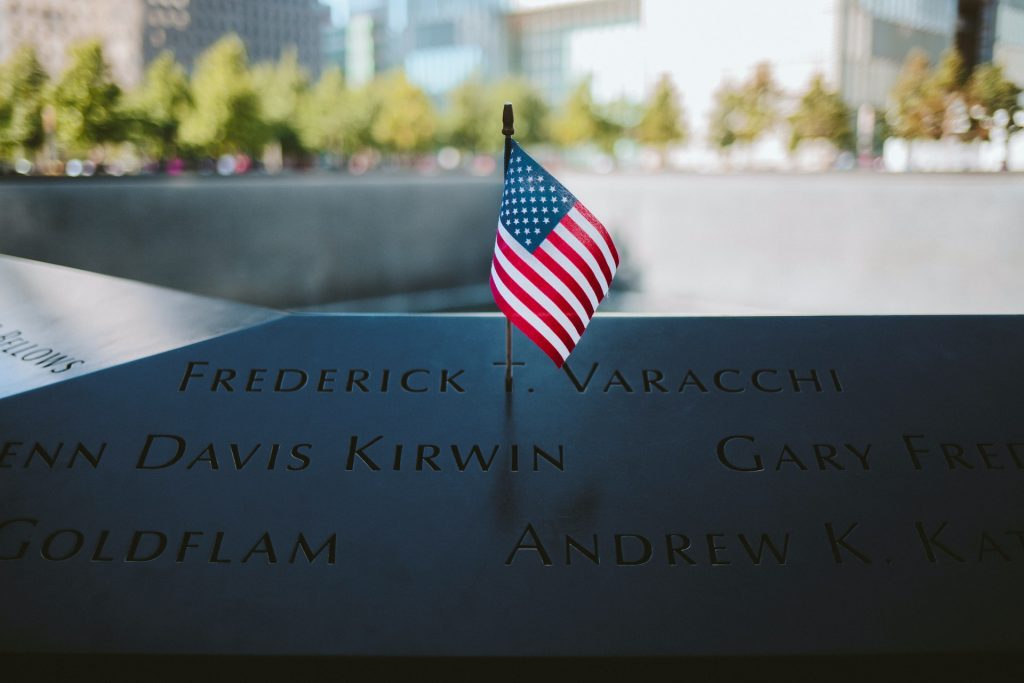
Easily one of the top attractions in all of New York City, the 9/11 Memorial & Museum exists today as a place of remembrance right in the center of the rebuilt World Trade Center area. With a focus on reflection and healing rather than sorrow or fear, the memorial creates a space of serenity very rarely found in such a hectic city.
You should make time to visit this attraction when you come to NYC. It’s not often you tour a space that almost everyone feels some connection to. This travel guide will help you plan ahead so you know exactly what to expect and can make the most of your visit.
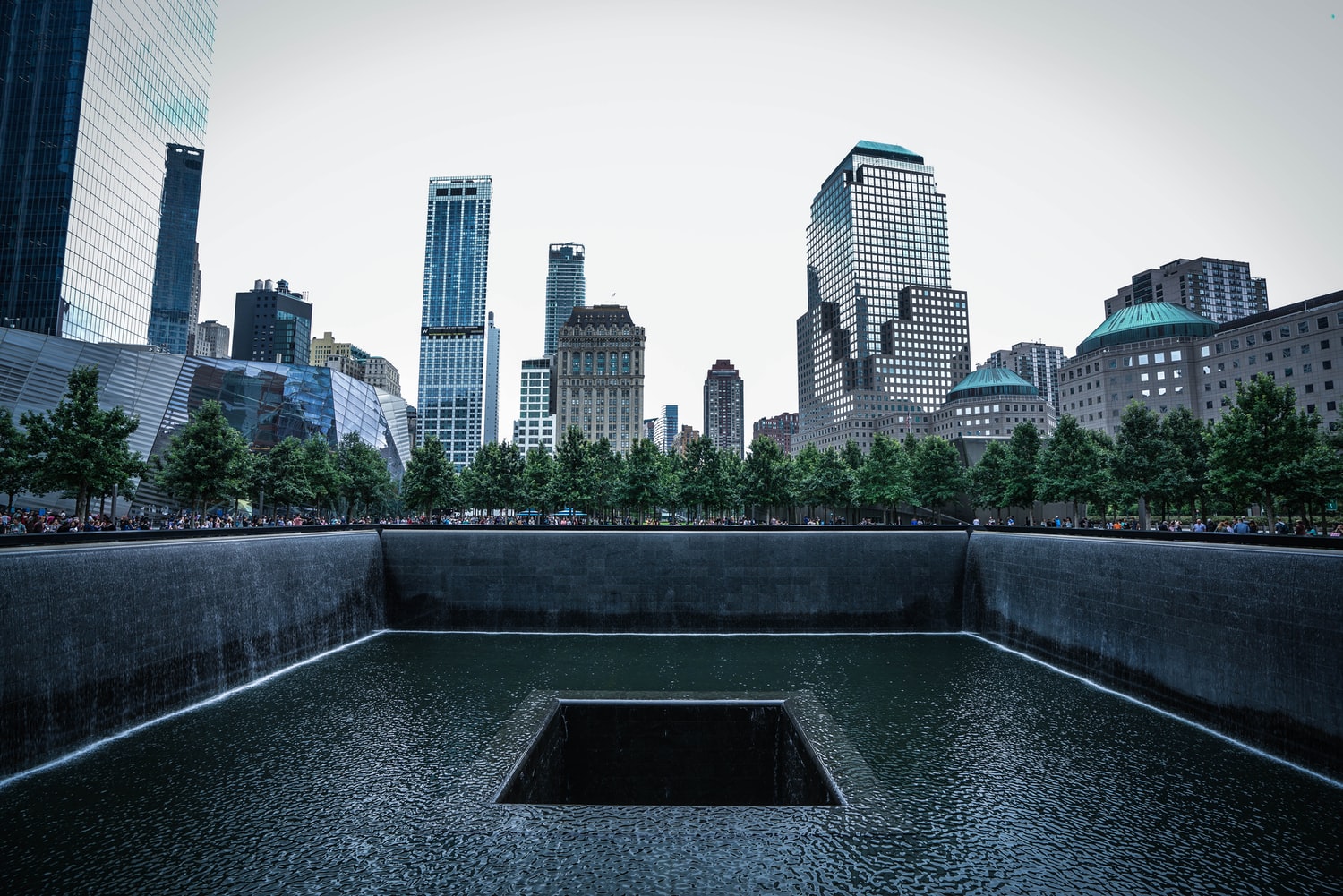
When you enter the memorial the very first thing you will notice are two memorial pools. Placed in the footprints of the North and South Tower, the cascade of water that pours from the rim creates a peaceful atmosphere.
This is one of the highlights of our guided tour of Ground Zero, and it’s truly a moving sight to behold. Titled “Reflecting Absence,” the pools were designed by architect Michael Arad after winning an international design competition with over 5,000 entries. You’ll notice that no matter where you stand, the bottom center of the pool cannot be seen. This is meant to symbolize the unending impact of loss.
Between the two pools is the entrance and top floor of the 9/11 Museum — most of which is underground. Surrounding the memorial is a series of skyscrapers that now make up the World Trade Center. The tallest building is Tower One, otherwise known as the Freedom Tower. The top of this building is home to One World Observatory with beautiful views of New York Harbor and downtown Manhattan. It’s a great place to stop before or after your visit to the memorial.
Walking around the memorial you’ll notice a few other symbolic components. Next to the South Pool is the Survivor Tree, one of the only living things found in the rubble of Ground Zero.
Behind the tree, the Memorial Glade, a more recent addition to the memorial, is dedicated to the thousand of individuals who have died since Sept. 11, 2001, due to health complications resulting from their exposure to toxins in the air on the day of the attacks.
Continuing south, look up for the remnants of The Sphere. This sculpture was originally the centerpiece of the World Trade Center Plaza and is displayed exactly as it was found in the remains of the Twin Towers.
Across the street is the FDNY Memorial Wall. The wall lists the names of the 343 firefighters lost, printed in bronze under a sculpture of firefighters racing toward the burning Twin Towers.
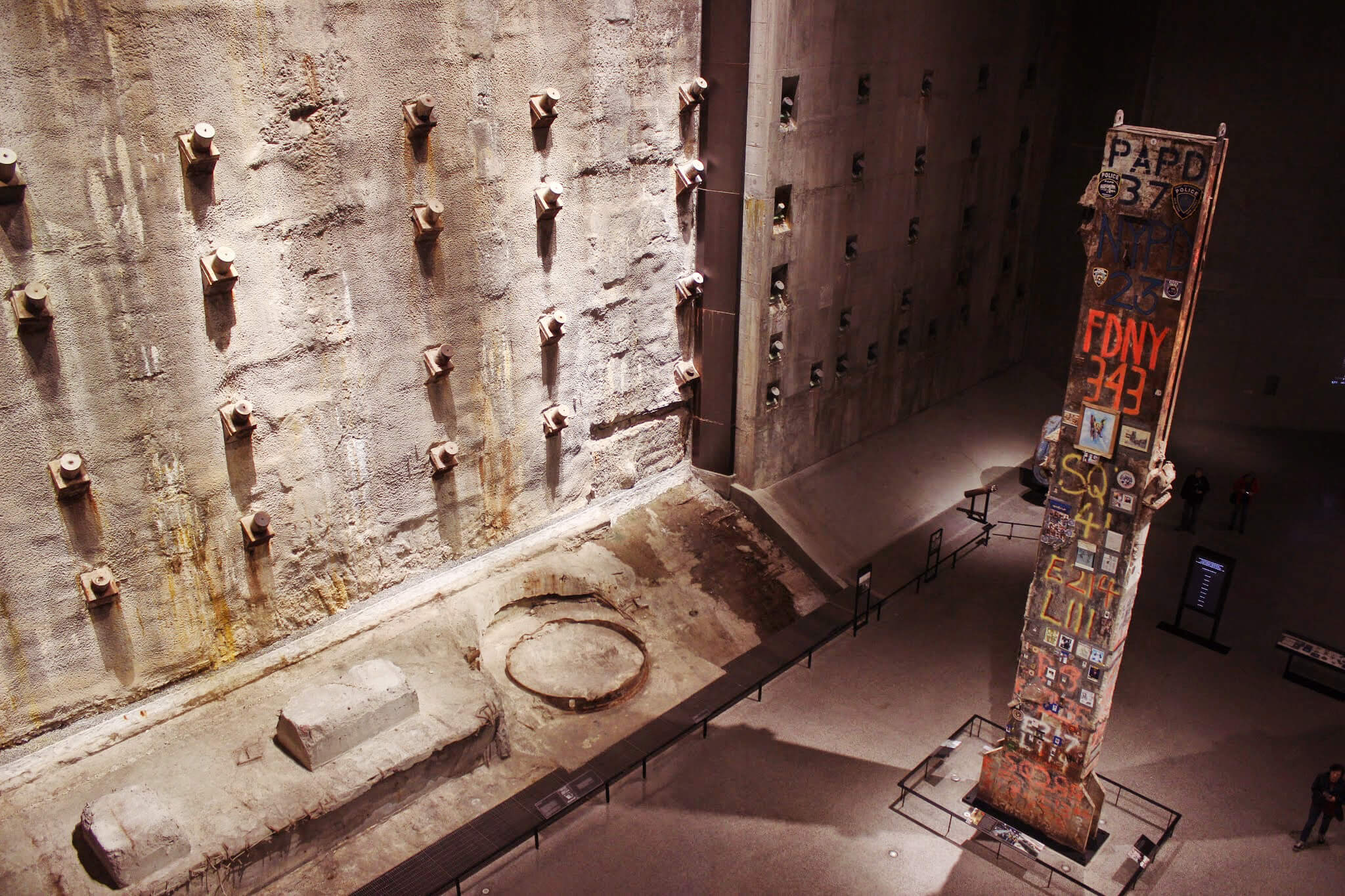
You might think the best idea is to take a quick stroll through the memorial and be off. Sure, this would certainly take up very little time in a busy schedule, but visiting the museum adds to the entire experience.
The exhibits are incredibly detailed and take you step-by-step through the events of the day. It can be difficult to walk through at times — reliving the tragedy isn’t easy — but alongside heart-wrenching stories come inspiring moments of awe.
The amount of information is impressive, so be sure to allow enough time. The traditional recommendation is two hours, but you can easily spend up to four if you’re trying to see everything. You’ll find individual stories about the thousands of victims, remnants of the original buildings, and never-before-seen footage and images. The time you will spend is more than worth the money.
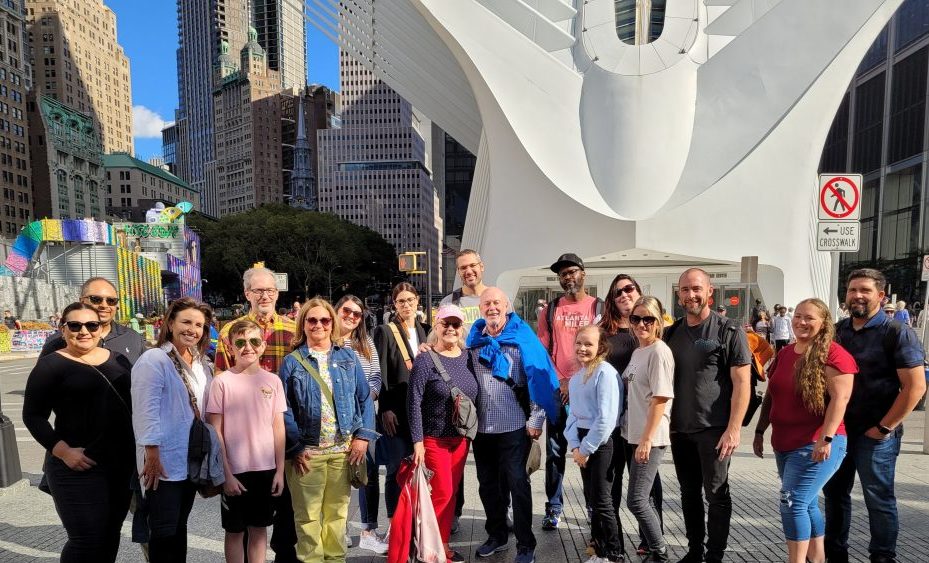
As New Yorkers, we’re probably biased. We think the best way to experience Ground Zero is to go with a local. It’s one way you can actually experience this place — it’s not just looking and seeing but also hearing the stories of the day. That includes firsthand accounts from someone who was here in New York during the attacks as well as the many other stories of heroism and bravery and, yes, loss.
Walking around the memorial is always special, but going with a guide helps focus your visit. You’ll also see more than just the memorial. Our tour begins outside St. Paul’s Chapel, a block away from where the former World Trade Center once stood.
And if you want to visit some of the other places here at Ground Zero, like the One World Observatory and the 9/11 Museum, we can include tickets for those as well. All three together are a great way to get a holistic view of this area, from the solemn beauty of the 9/11 Memorial to the impressive technology and panoramas at the OWO.
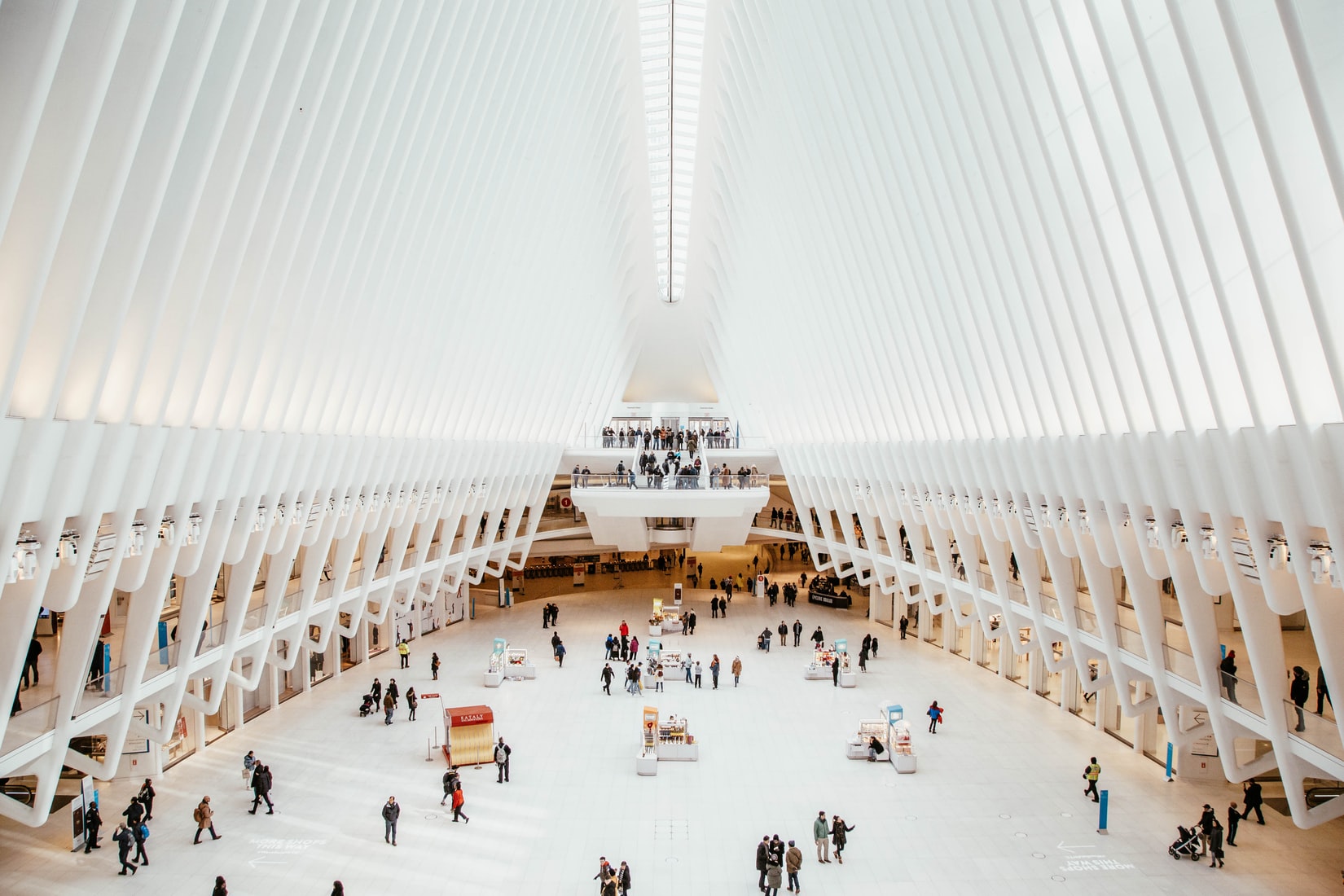
There is so much to do in downtown Manhattan that you could easily fill three days with a whole range of activities.
Located in the World Trade Center Plaza is the Oculus, a white structure topped with giant wings, which contains shops, food, bathrooms and connections to multiple methods of transportation. Follow the halls of the Oculus underneath the memorial, and you’ll come to Brookfield Place, another shopping center with a great food court and access to a beautiful walkway along the Hudson River.
If you’re interested in exploring further connections to 9/11, make sure to stop by St. Paul’s Chapel at the intersection of Broadway and Fulton Street. From Broadway you can easily walk to Trinity Church, the New York Stock Exchange, or Battery Park, where a great view of the Statue of Liberty and Ellis Island awaits.
You can easily spend a day exploring all of these sights in Lower Manhattan, while including a visit to the 9/11 Memorial & Museum.
A five-minute walk north on Broadway and you’ll pass by City Hall, right across the entrance to the Brooklyn Bridge. Another 15 minutes north through TriBeCa and you’ll hit Canal Street in the heart of Chinatown. Head over to Mulberry Street to grab a cannoli in Little Italy, and then keep walking for some shopping in SoHo. All three neighborhoods are unique and worth a visit.
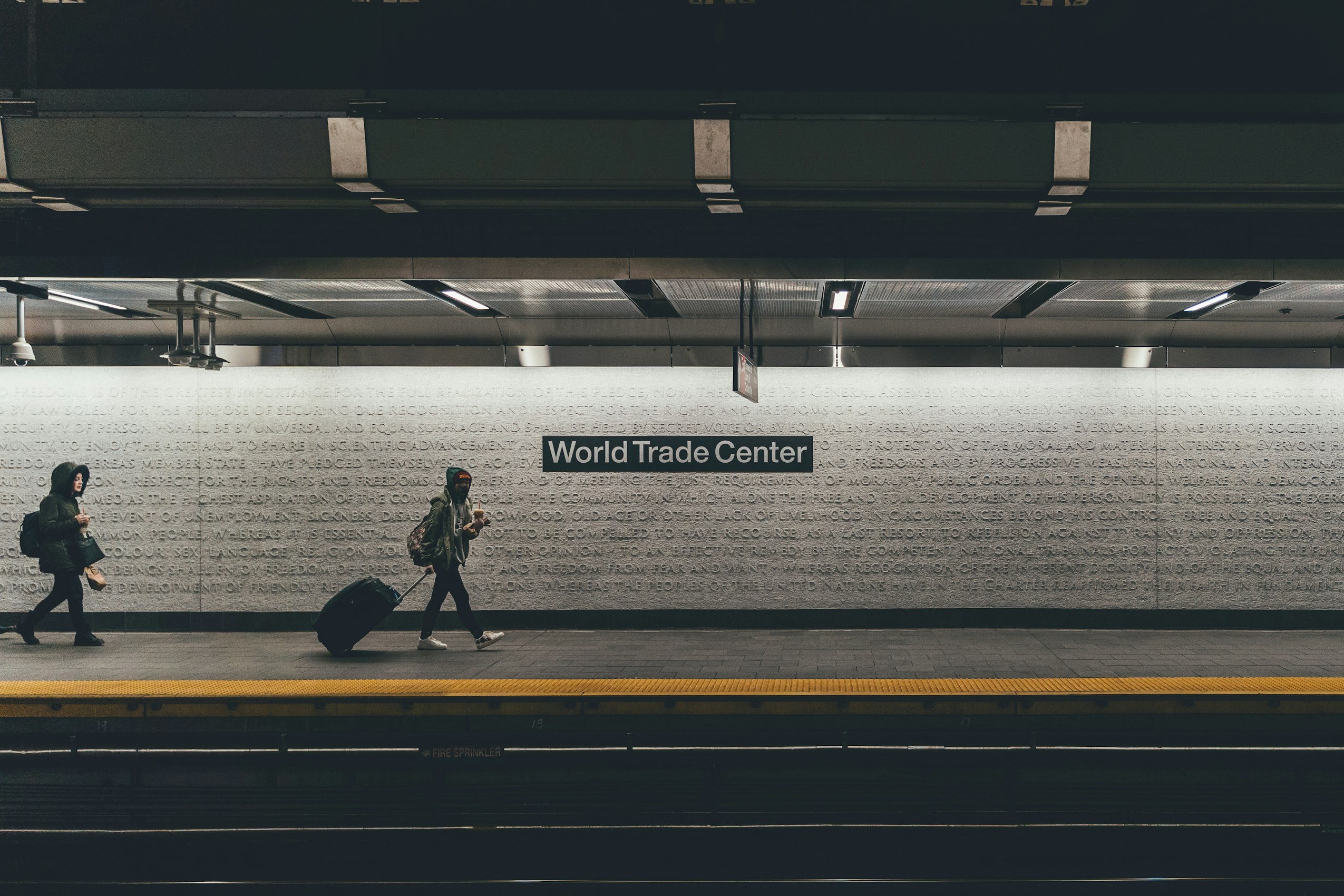
Since the Financial District is bustling with locals and tourists alike, there are plenty of options when it comes to transportation.
If you’re taking the train, the most direct route is the E train to the World Trade Center stop or the 1 train to the WTC/Cortlandt stop — you’ll wind up right where you need to be. However, if the E or 1 train isn’t close by, you can also head to Fulton Street station by taking one of the following trains: A, C, J, Z, 4, 5, 2 or 3. The memorial is just a couple blocks away, and Fulton Street has lots of food options and free bathrooms to use if need be.
Other options are the R or W trains to Cortlandt street station. You’ll arrive right between Millennium Hilton Hotel and the Oculus, with the memorial right behind it.
If you’re taking a cab, just tell the driver you are headed to the 9/11 Memorial and they should know exactly where to drop you. Once you get out of your car, you might be confused, but just look out for a collection of trees surrounded by towering skyscrapers.
Driving? Be aware that parking is extremely limited in the area. The Battery Parking Garage at 70 Greenwich Street is going to be your best bet.
If you’re coming in from New Jersey, there is only one stop along the PATH train route to take and that is the World Trade Center stop. But remember, this station is closed on many weekends so make sure to read any construction signs ahead of time if you’re planning on coming in on a Saturday or Sunday.
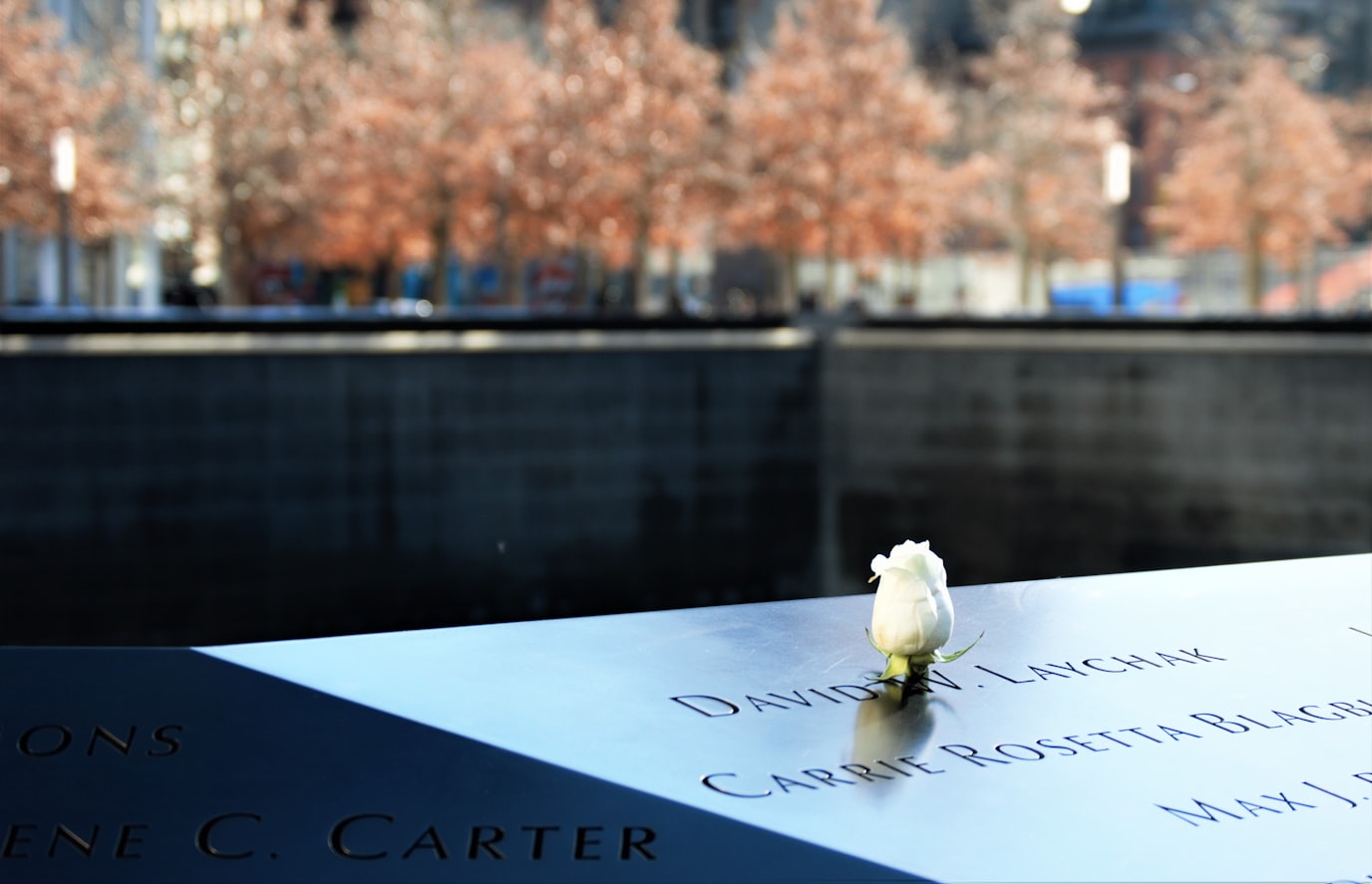
Keep in mind that you are at a memorial and the final resting place for thousands of people. Avoid loud disturbances like shouting. Don’t throw anything into the pools and don’t try to sit or stand on the parapets. Pictures are more than welcome, but again, be mindful of others.
As you walk around and take a look at the names of the victims, you will notice they are not listed alphabetically but rather by affiliation. Relatives, friends, and colleagues are inscribed next to one another. Employees of a company or the crew of a flight are together.
If you are looking for one name in particular, there are gray touch screens on the outside wall of the museum, right next to the south pool, where you can search for a specific name. The search will return a letter and number combination that matches with a panel number on either the North or South pool. You might also notice white roses placed throughout the parapets. If you see a white rose on someone’s name, it means that today is their birthday.
Be prepared for heavy security. Museum security is very similar to the airport with metal detectors and scanners. Alcohol, glass bottles, outside food and drinks, recreational wheeled vehicles, weapons, and explosives are all prohibited inside the museum.
For the memorial, you don’t have to go through any type of security to enter, but you will see many police officers and security surrounding the area to keep an eye on things.
The entrance to the museum is wheelchair-accessible, and elevators and escalators are offered wherever there are stairs. Personal mobility devices are welcome, and manual wheelchairs and walkers are available free of charge on a first-come, first-served basis at coat check.
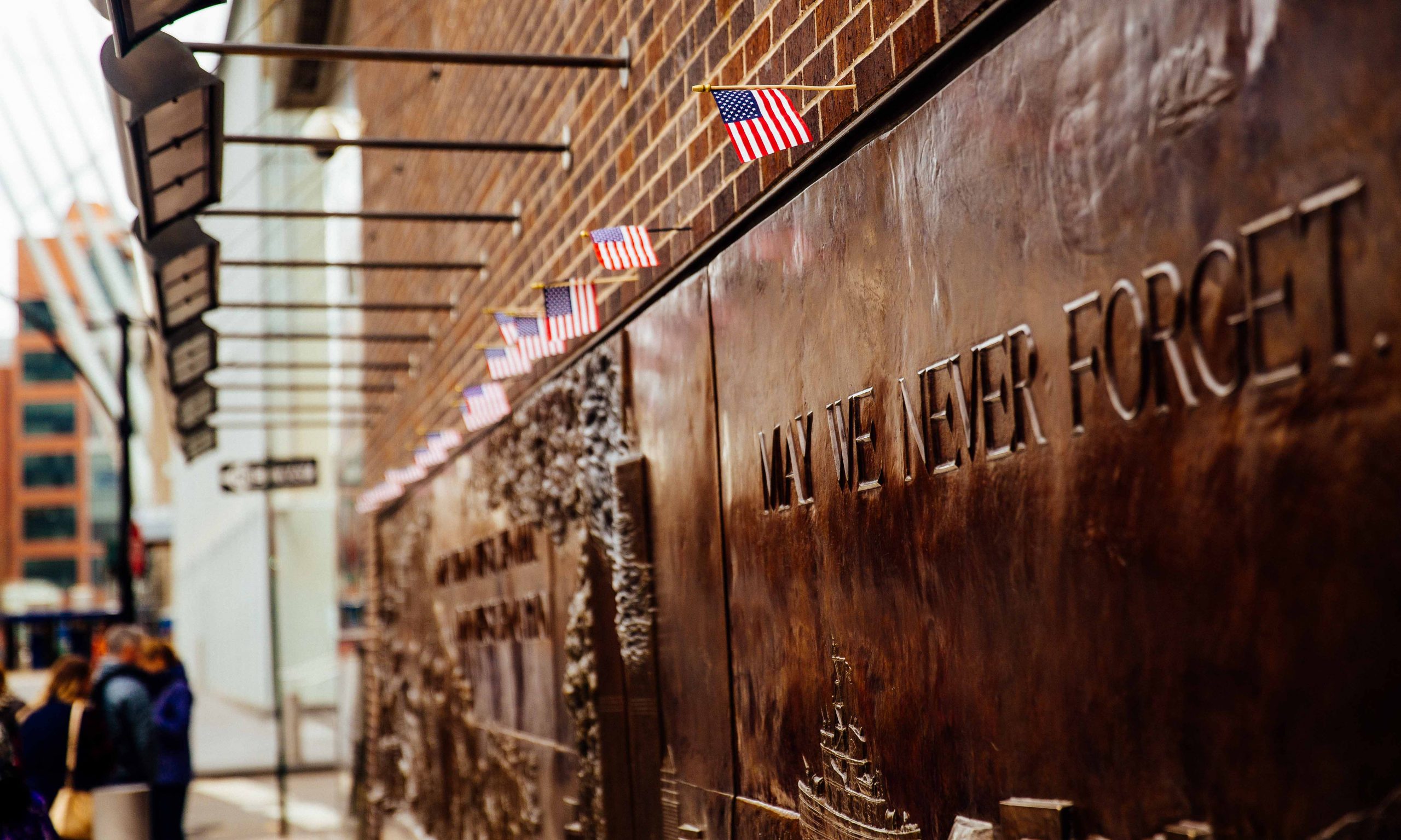
There is so much significance to both the memorial and museum in light of the impact the tragedy has had. As a New Yorker and a guide for ExperienceFirst, I think what makes the memorial so exceptional is that it turns a universal event into an extremely personal encounter.
Everything about the memorial is meant to be experienced. The water under the parapets is meant to be touched, a natural substance and the simplest representation of life.
My favorite part of the memorial, the Survivor Tree, isn’t solely a symbol for New York City — it supports many other cities as part of the seedling program. Every year, this program allows for the donation of seedlings from the tree to three communities that have endured tragedy in recent years. It’s a beautiful message of comfort and resilience.
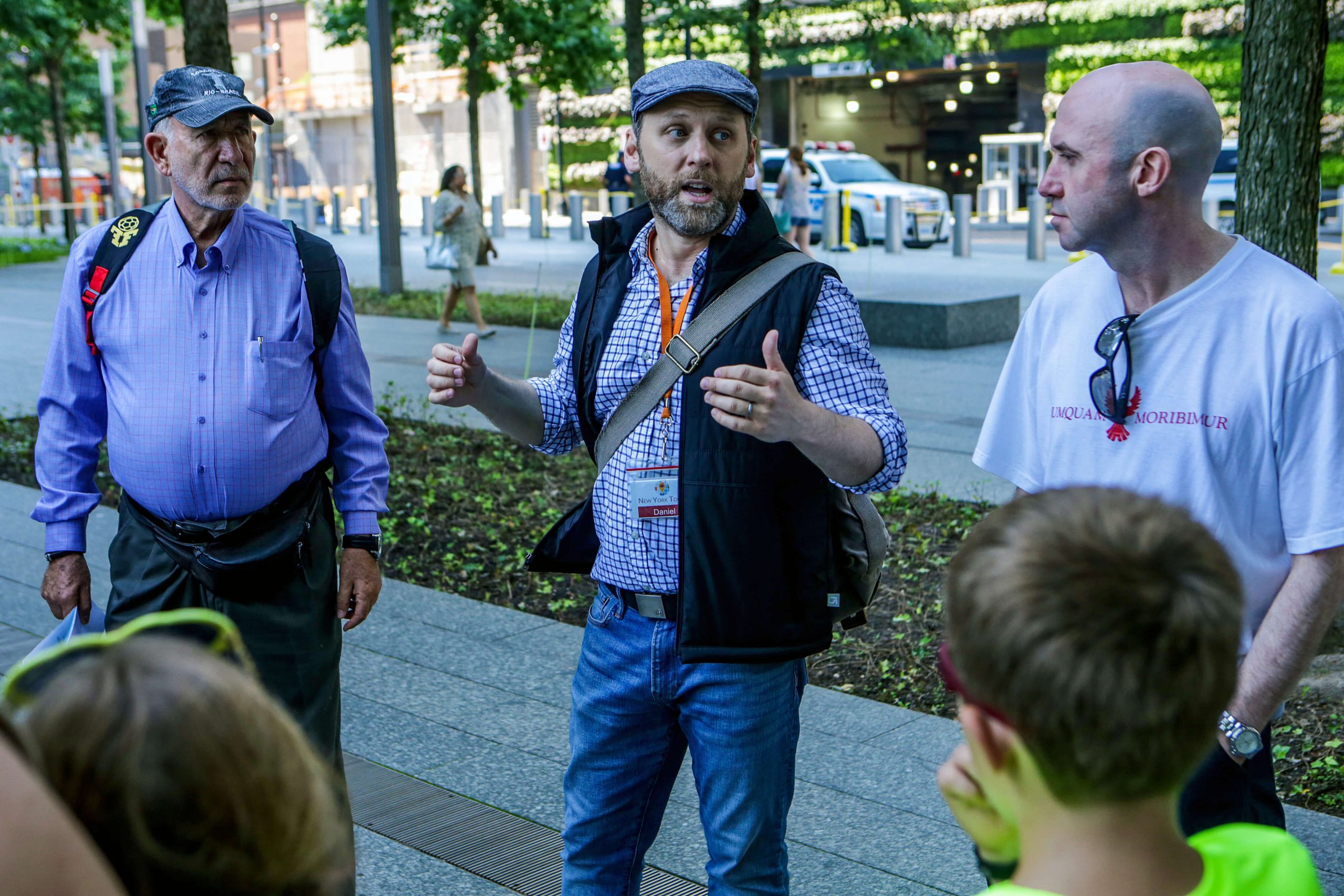
To put it simply, the 9/11 Museum located on the memorial site is the “official” museum. The 9/11 Tribute Museum is run by the September 11 Families Association and focuses more on the personal experiences of those impacted by the attacks.
Both are informative and compelling, but if you have to choose one, I would recommend you spend your time at the 9/11 Museum.
Guide tip: Make sure you get the right ticket. While the 9/11 Tribute Museum is a quality exhibit, many guests will buy a package deal for One World Observatory and the Tribute Museum thinking that they are getting tickets to the museum inside the memorial and end up disappointed. If you choose a combo ticket instead of going with a tour, make sure you read the information carefully to ensure you know what you are buying.
The memorial is completely free, but you must pay to visit the museum. Currently, tickets range from $24-$53. You can get free admission to the museum on Monday evenings with up to four free tickets reserved online. However, limited quantities of these tickets are available, so you have to reserve in advance. Free admission is always granted to family members of 9/11 victims, first responders, and recovery workers. We also offer museum admission with our tour. Just be sure to select “Museum Entry” when you choose your date.
The memorial is open daily from 7:30 a.m. to 9 p.m.
From Sunday through Thursday, the museum is open 9 a.m. to 8 p.m., closing an hour later on Friday and Saturday. One exception, on Sept. 10 every year, the last public entry to the memorial and museum is at 3:30 p.m. with the rest of the day being reserved for 9/11 family members. It’s also closed to the public on Sept. 11 (see below).
Every year on September 11th, the memorial and museum is closed to the public and reserved for family members only. However, at night you will witness the “Tribute in Light” — two beams of blue light shot into the sky to represent the image of the towers.
Children are welcome throughout the memorial and the museum, but it is only recommended for children 10 and above. You know your kids better than anyone, so if you think they will be respectful and understanding, then there is no reason not to bring them along.
The museum is educational for students. It can be a useful tool for them to realize the significance of this event in America’s history. Just remember, some of the exhibits are very graphic, but there are signs posted to warn guests, so you’ll be prepared if you think your child can handle it.
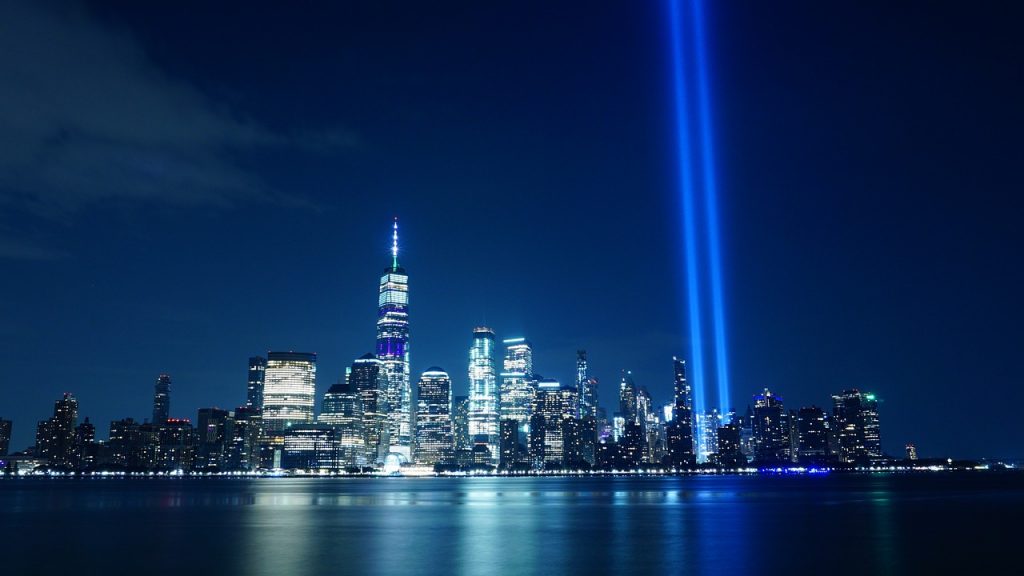
No other destination in New York represents the power of memory and emotion quite like the 9/11 Memorial & Museum. After you visit, you’ll understand how 9/11 was not exclusively a New York City or even an American tragedy — it was felt by many around the world.
You can’t understand New York’s history without spending the time to reflect on September 11th at the memorial and museum. This tragedy is part of this city’s DNA. The brave men and women who risked their lives will always be remembered. Walking around the memorial and the museum, you’ll realize there’s never a reason to give up hope. You’ll experience New York at its lowest and darkest point — yet as you continue your journey through the city, perhaps with one of the many insightful New York tours, you’ll be inspired by its ability to heal and to thrive. It’s a reminder that there is really no other place in the world like New York.
 12 Attractions You Must Not Miss in NYC
12 Attractions You Must Not Miss in NYC
So you’re ready to explore New York! Whether you’re planning for a weekend or you’ve been here for years, there’s so much to…
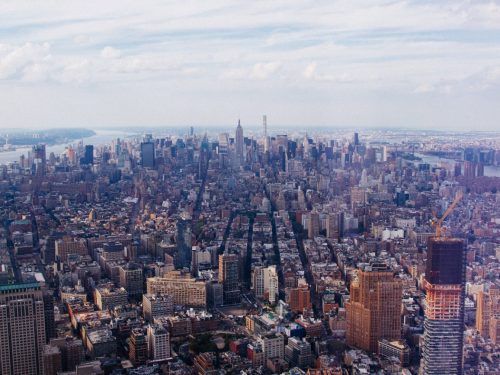 See New York City From Top to Bottom at One World Observatory
See New York City From Top to Bottom at One World Observatory
In about 47 seconds, the One World Observatory (OWO) elevator rockets its riders 1,300 feet in the air. As the doors open, visitors…
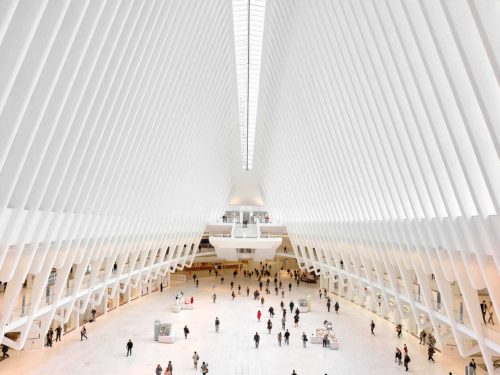 Visiting the World Trade Center Oculus at Ground Zero
Visiting the World Trade Center Oculus at Ground Zero
After the devastating attacks on September 11th destroyed all seven World Trade Center buildings, a plan to rebuild was quickly put in place.…